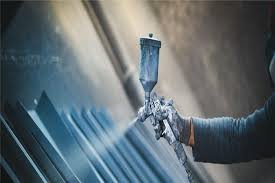Protective coatings play a vital role in safeguarding surfaces from corrosion, wear and tear, weathering, and other forms of damage. However, despite their importance, there are several misconceptions surrounding protective coatings that can lead to misunderstandings and misinformed decisions. This detailed blog will debunk some of the most common misconceptions regarding protective coatings, providing clarity and insight into their true capabilities and benefits.
Misconception 1: All Protective Coatings Are the Same
Reality: One of the most prevalent misconceptions about protective coatings is that they are all identical, offering the same level of protection and performance. In truth, protective coatings vary widely in their composition, properties, and suitability for different applications. Numerous types of protective coatings are designed to address specific challenges and conditions. For example, some coatings are formulated to resist corrosion in harsh industrial environments, while others are tailored for decorative purposes or UV protection in outdoor settings.
Misconception 2: Protective Coatings Are Only for Industrial Use
Reality: While protective coatings are commonly used in industrial settings to protect equipment, machinery, pipelines, and structures, they are also widely employed in various other sectors and applications. Protective coatings can be found in residential buildings, commercial properties, automotive applications, marine vessels, aerospace components, and consumer electronics. Protective coatings offer versatile solutions for a wide range of surfaces and substrates, from coating kitchen appliances to sealing wooden decks.
Misconception 3: Protective Coatings Are Only Applied to Metal Surfaces
Reality: While protective coatings are frequently applied to metal surfaces to prevent corrosion and extend their lifespan, they are not limited to metal substrates. Protective coatings can adhere to various materials, including concrete, wood, plastic, glass, ceramics, and composites. For example, concrete sealers are commonly used to protect and enhance the durability of concrete floors, driveways, and sidewalks. At the same time, wood sealants are applied to wooden decks, fences, and furniture to prevent moisture damage and decay.
Misconception 4: Protective Coatings Are Maintenance-Free
Reality: While protective coatings can provide durable protection against environmental factors and mechanical damage, they are not entirely maintenance-free. Over time, coatings may degrade or wear off due to exposure to UV radiation, temperature fluctuations, abrasion, chemical exposure, and other factors. Regular inspection, cleaning, and maintenance are essential to ensure the continued effectiveness of protective coatings. This may involve periodic recoating, touch-ups, or surface preparation to maintain optimal performance and longevity.
Misconception 5: Protective Coatings Are Always Expensive
Reality: While some high-performance protective coatings may have a higher upfront cost, not all protective coatings are prohibitively expensive. There is a wide variety of protective coatings available at different price points to suit various budgets and requirements. Additionally, investing in quality protective coatings can yield significant long-term cost savings by prolonging the lifespan of assets, reducing maintenance and repair costs, and preventing premature replacement. When evaluating the cost-effectiveness of protective coatings, it is essential to consider their durability, performance, and overall value proposition.
Misconception 6: All Protective Coatings Are Environmentally Harmful
Reality: While certain protective coatings may contain volatile organic compounds (VOCs) or other environmentally harmful ingredients, many modern coatings are formulated to minimize environmental impact. Low-VOC and zero-VOC coatings are available, which emit fewer toxic chemicals into the air and are safer for both users and the environment. Additionally, some protective coatings are designed to be water-based, solvent-free, or made from eco-friendly materials, reducing their ecological footprint. When selecting protective coatings, choosing environmentally responsible options that prioritize sustainability and safety is advisable.
Misconception 7: Applying Protective Coatings Is a Complex Process
Reality: While applying certain types of protective coatings may require specialized equipment, training, and expertise, many coatings can be applied using simple application methods such as brushing, rolling, or spraying. Manufacturers typically provide detailed application instructions and guidelines to ensure successful coating application. Additionally, professional applicators and contractors can assist with more complex coating projects or applications requiring specialized techniques. With proper preparation, surface cleaning, and adherence to application instructions, applying protective coatings can be a straightforward and manageable process.
Misconception 8: Protective Coatings Provide Permanent Protection
Reality: While protective coatings can significantly extend the lifespan of surfaces and substrates, they do not offer permanent protection against damage or deterioration. Environmental factors, mechanical stress, and other variables can degrade coatings over time, necessitating periodic maintenance, recoating, or refurbishment. Additionally, the effectiveness of protective coatings may vary depending on application conditions, substrate properties, and exposure factors. While protective coatings can provide long-lasting protection, they should be viewed as part of a comprehensive maintenance strategy rather than a one-time solution.
Misconception 9: More Coats Equal Better Protection
Reality: While applying multiple coats of protective coatings for enhanced durability and protection may seem intuitive, more coats do not necessarily equate to better performance. Excessive coating thickness can lead to poor adhesion, cracking, bubbling, and uneven coverage. Instead of applying multiple coats indiscriminately, following manufacturer recommendations regarding the proper application method, coverage rate, and drying times is essential. Achieving the optimal coating thickness and uniform coverage is key to maximizing the effectiveness of protective coatings.
Misconception 10: All Protective Coatings Offer the Same Level of Durability
Reality: Protective coatings vary in durability, resistance properties, and performance characteristics. Some coatings are specifically formulated for high-traffic areas or harsh environments and offer superior durability and longevity. Others may be more suitable for light-duty applications or temporary protection. When selecting protective coatings, it is essential to consider factors such as abrasion resistance, chemical resistance, UV stability, and wearability to ensure they meet the specific requirements of the intended application.
Conclusion
Protective coatings are invaluable tools for preserving and enhancing the lifespan of surfaces, structures, and assets across various industries and applications. By debunking common misconceptions surrounding protective coatings, we can better understand their capabilities, limitations, and proper use. From dispelling myths about cost and complexity to highlighting the versatility and environmental considerations of protective coatings, it is essential to approach coating selection, application, and maintenance with informed decision-making and best practices. By doing so, we can harness the full potential of protective coatings to safeguard our investments, promote sustainability, and ensure long-lasting protection for years to come.
Looking for protective coatings in India? Contact us or visit our website today to learn more about protective coatings.


